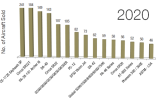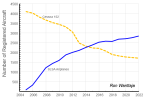Exactly. So if the regulatory route costs more to buy and the non-regulatory Van's route costs more to buy, how does only the regulation get blamed? Cessna, Beechcraft, and the other OEMs have all proven they will spend the millions to certify new aircraft provided there is a viable market to serve. However, most private GA owners do not provide that market or do not want one. Simple economics, no regulations required. This same scenario happened 20+ years ago and the private GA owners didn't bite then either.
What I’d like to know, with all the supposed cheap cutting edge production technologies out there that everybody whines about should be used to make cheaper aircraft… why hasn’t someone taken a worn out Bonanza, Mooney, Piper or Cessna, disassembled it, scanned it, 3D printed a full-size replica, glued it together, slapped a Rotax or two on it, and revolutionize the private GA industry? Not a single regulation is required to do this until time to fly it. So what's the excuse? Should be able to that for what… $100 or so plus the cost of a Rotax or two?



